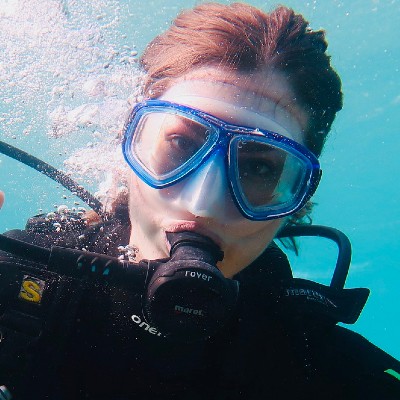Table of Contents

One of the first pieces of scuba equipment that everyone has to buy is a mask.
A scuba mask is a piece of diving equipment that allows underwater divers to see clearly underwater. It consists of a faceplate or lenses, a frame, a face seal, and straps. The faceplate or lenses provide the diver with a clear view of the underwater environment, while the frame holds the faceplate or lenses in place. The face seal creates a watertight seal around the diver’s face, preventing water from entering the mask. The straps secure the mask to the diver’s head.
How To Find The Right Fit
The most important factor when considering a mask is how it fits. Never buy a mask based on looks alone.
Ideally, a mask should seal to the skin without causing pain. The best way to determine this is to hold the mask to your face and without using the straps to keep it in place, inhale. A well-fitted mask should hold and feel comfortable (until you exhale).
Most scuba shops have a display mask for just such an exercise. Be sure to try every option available – you never know which one will end up being the best fit for your face shape and size!
Our recommendation is that if you find a mask you love, buy two! It’s always a good idea to have a backup mask in case one breaks or gets lost.
The Different Styles Of Scuba Mask
There are three main styles of masks for scuba diving.
- Single lens: This is the most common type of scuba mask. They have a single lens that provides a wide field of view.
- Dual lens: This style has two lenses that are spaced slightly apart. This provides a wider field of view than a single-lens mask, but some divers report that it can also make it more difficult to focus.
- Tri lens: This mask style has three lenses that are arranged in a triangle shape. This provides the widest field of view of all three types of masks. Like the dual lens, some divers report difficulty with focusing when using a tri lens mask.
Low-Volume vs High-Volume Masks
When shopping for a mask, manufacturers will label each model as low-volume or high-volume. What does this mean?
Volume refers to how much air space is available inside of the mask. Low-volume masks have less air and sit closer to the face. This can reduce drag and the effort needed to clear the mask is less. High-volume masks have a larger air space, extending peripheral vision and creating a feeling of openness. High-volume masks are slightly harder to clear.
Can I Have A Prescription Lens Put Into A Scuba Mask?
Yes! Many manufacturers can help by creating a custom lens for the mask. Some also design masks where the prescription lens can easily be swapped out. Speak with your local dive shops to learn more about which options are available in your area.
Can I Use A Snorkel Mask For Scuba Diving?
No, snorkel and scuba masks are not interchangeable. Snorkel masks are not designed to withstand pressure and are typically made from affordable rubber and plastic. Scuba masks are made from silicone and shatterproof tempered glass, ensuring a better seal and enhanced safety at depth.
How Long Do Scuba Masks Last?
When properly cared for, a high-quality mask will last for 10-20 years. This, however, also depends on how frequently the mask is used. Scuba professionals and those that dive multiple times a week will wear their masks out much faster than those that only dive a few times a year.
